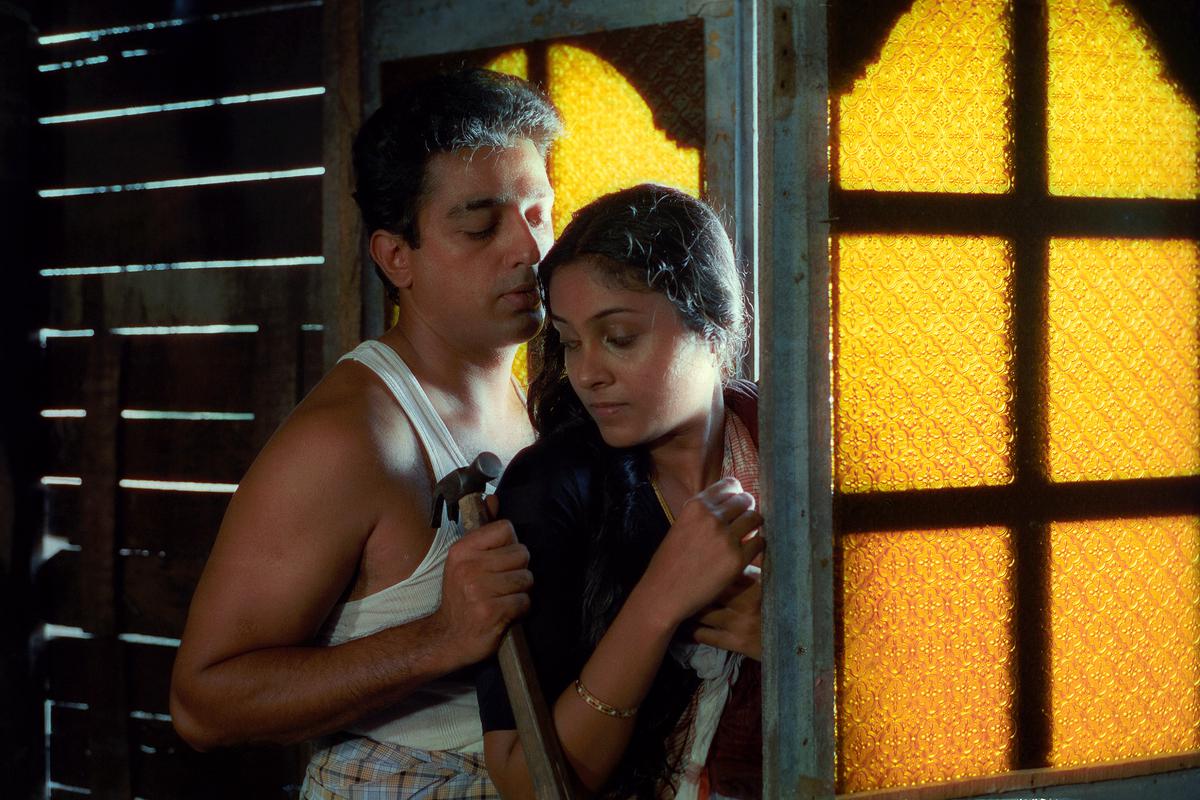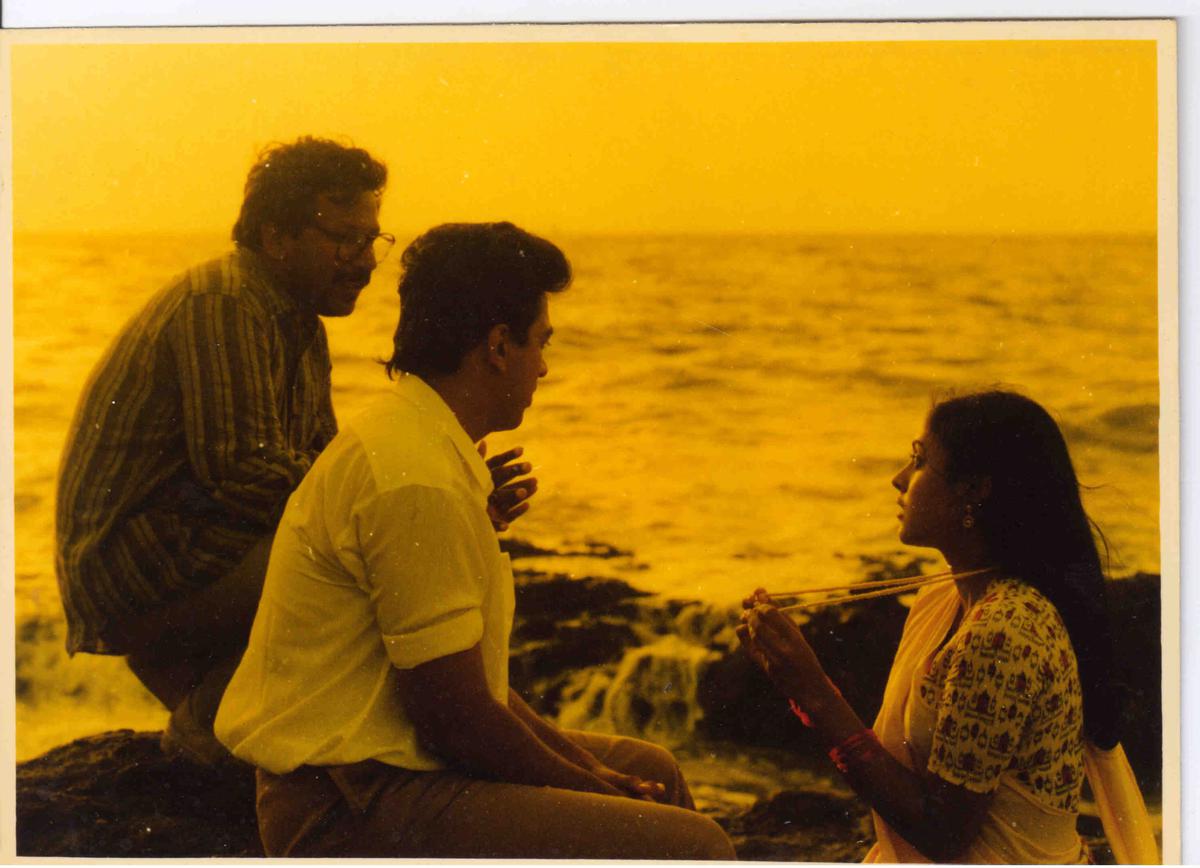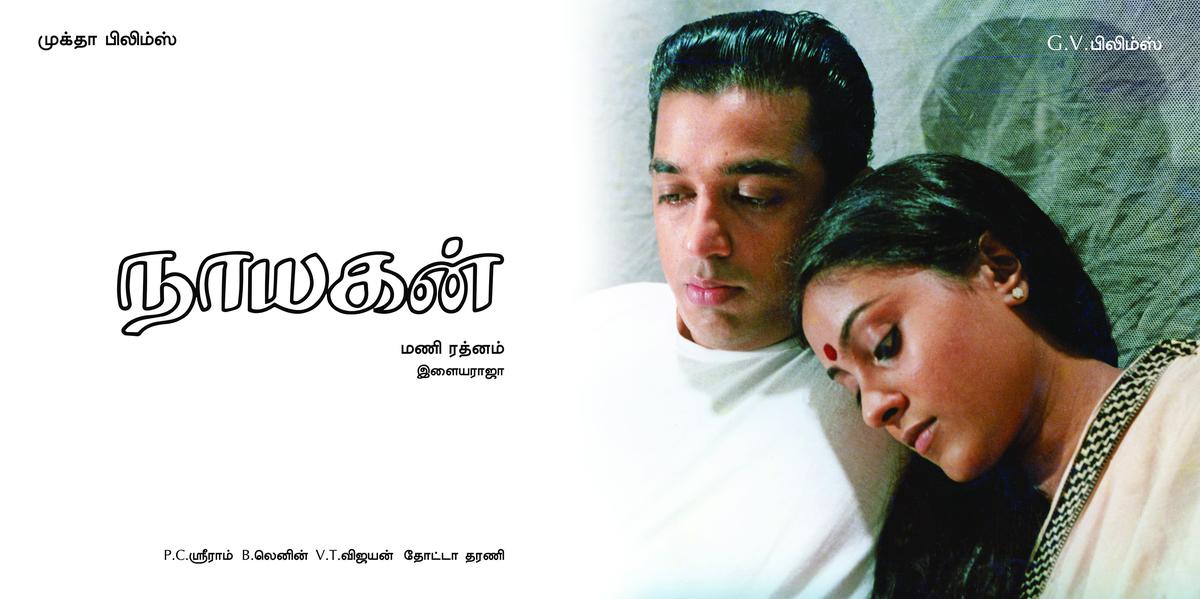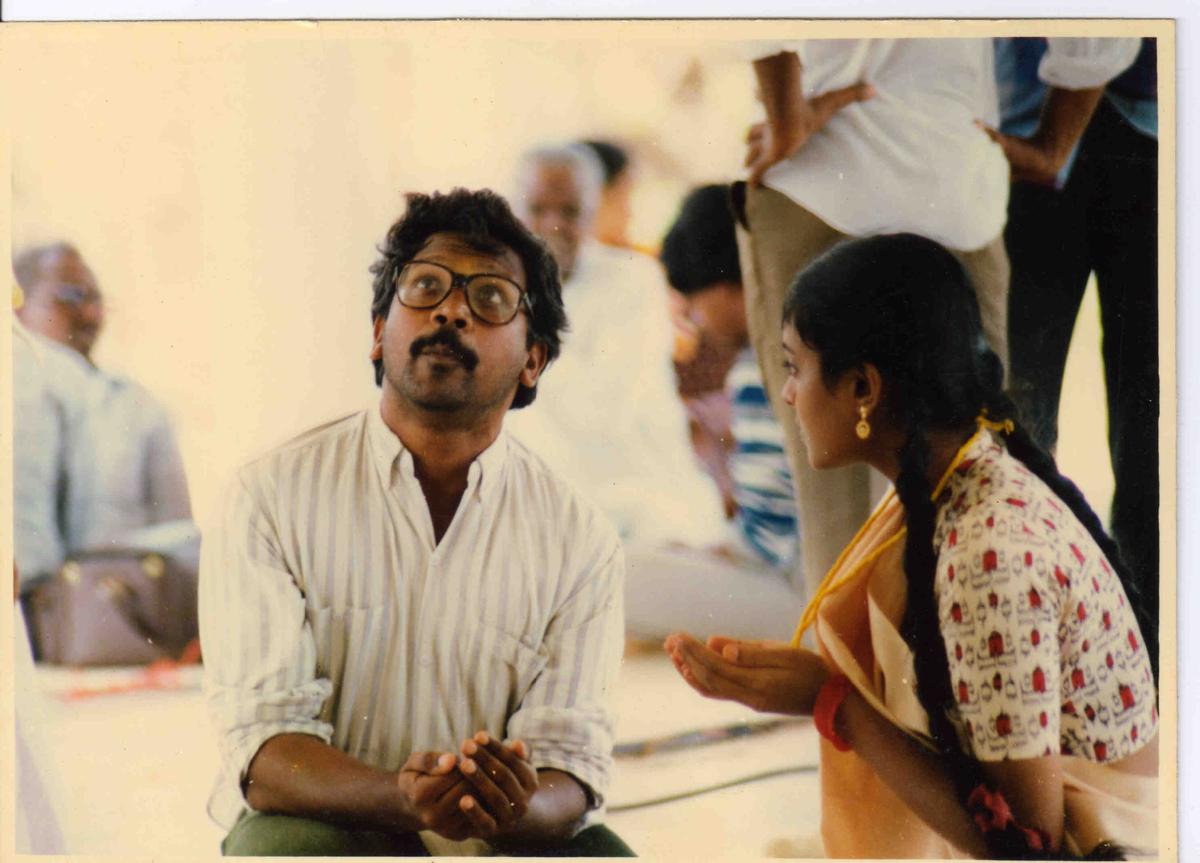As Mani Ratnam’s ‘Nayakan’ celebrates 35 years, architect Nandan Balsavar, who experienced the film sets at Venus Studio in Madras in 1987, decodes some of its tacit meanings
As Mani Ratnam’s ‘Nayakan’ celebrates 35 years, architect Nandan Balsavar, who experienced the film sets at Venus Studio in Madras in 1987, decodes some of its tacit meanings
Nayakan (1987) is probably one of the most memorable characters played by Kamal Haasan, a role in collaboration with Mani Ratnam’s prowess for meticulous detail. The film is a narrative about Velu Nayakar, who grows into a life of vigilante-justice, in response to a series of social circumstances that unfold.
Over 30 years ago, it was an archaeological experience to visit the film sets of Dharavi, constructed by Thota Tharini, at Venus Studio in Madras. It remains a testimony to Mani Ratnam’s imagination of Bombay, from the heart of Alwarpet in Madras.
Kamal Haasan’s avatar of Velu Nayakar, from youth to old age, is complemented by three basic elements of Mani Ratnam’s architecture: the harsh reality of Dharavi, the colonial architecture of Bombay and the warm interiors of Nayakan’s home.
Mani Ratnam invokes a collaborative synergy with some of the most revered artists in the industry: PC Sreeram’s cinematography, art direction by Thota Tharini, maestro Ilayairaaja’s musical score, the entire cast (Saranya, Kartika, Delhi Ganesh, Janakaraj, Nasser et al), Lenin, Vemuri and Vijayan’s fine editing and the producers’ faith in the project.

A still from ‘Nayakan’
| Photo Credit: Madras Talkies
Reconstructing a locale
What is the context of the film and how was Bombay reconstructed in Madras? Pre-digital India (1980s) survived without mobiles, Internet or social media. It was the phase before its transformation from a socialist-republic into a fast-paced, consumerist society. Madras and Bombay were later renamed Chennai and Mumbai. Factories were closing down with trade union leaders fighting for labour-rights. Hard-working Tamil immigrants were relocating to Dharavi, Matunga and Sion in Bombay.
The story begins on the serene coasts of Tamil Nadu: A young boy, Velu, is on the run after the death of his father, a trade-union leader, in a shoot-out amidst groves. Velu avenges the death and escapes to find refuge in Dharavi’s slums. He is adopted by a foster-father, living in a small, dark room. Thus begins the strange life of vigilante-justice. Like “montage cinema” of the 1920s, the film sets at Venus Studio unfold with fragmented events, and are woven together by incredible storytelling.
The sets philosophically narrate the circumstances of informal slums in our cities, which are treated as illegal villages, and rarely included in urban development plans. Forced to exist outside a legal status, they remain vulnerable under challenging social circumstances.

A still from ‘Nayakan’
| Photo Credit: Madras Talkies
Ratnam’s Dharavi on screen, conveys a deep sense of interiority of a “world within a world”, of narrow labyrinthine streets and a large communal open space for commerce, festivities and celebrations, of fragile shanties made of tin-sheets and plywood planks. PC Sreeram’s agile and graceful cinematography resonates with Tharani’s sets to create an intense compression of “frame within frames”, and high-contrasts of shadows.
One evening, during my visit to these abandoned sets, torrential Madras rain-storms blurred the lines between the real and imagined. On screen, however, the Nayakan rains had transformed into shades of the translucent blue-grey fog of uncertainty. Few directors can invoke the spirit of rains like Mani Ratnam, with their aura, magnetism and mystery. Unlike Kurosawa’s abstract rains, Ratnam’s rains embody a raw Indian climate, conveying diverse emotions: celebrations, remorse, fear, fury and compassion.
Attention to detail
Looking back after 35 years, it was formidable for Thota Tharini and his collaborators, to recreate Dharavi in Madras. Each element was artistically crafted, from small shrines, the plinth under the tree, the pavilion for the musicians, the Cuddapah stone floors, a mirror in the room, a wooden bridge, petty shops, carts, strewn car tyres, cloth awnings, lamp shades, furniture, the pond and the streets.
Visiting the abandoned bungalow at the film sets, its large rooms echoed the illusory awe of Nayakan’s vigilante-justice. On screen, this home transforms, rendering each phase of Nayakan’s inner life. A metaphorical score by maestro Illayaraja complements the chronology of age.

A still from ‘Nayakan’
| Photo Credit: Madras Talkies
As a young boy, Velu finds refuge in the foster-father’s house in Dharavi. Married, he moves into a home that gradually expands, though with leaking roofs, a few pigeons and stark windows. As Nayakan matures, feared and respected, the home transforms further, into an old colonial bungalow with high ceilings, and two entrances. The living room now, is formal with vintage furniture and a wide British verandah.
The cinematography, however, reveals the interiority of Nayakan’s home in fragments. We never get a full image of the home from the exterior. To quote Martin Scorsese, “Cinema, eventually, is a matter of what’s in the frame and what’s out.” Mani Ratnam crafts startling effects of Nayakan’s home to conjure an awe for Velu Nayakar, in the face of a turbulent life.
The courtyard
The volatile experiences of good and evil are absorbed by the serenity of the open-to-sky, courtyard of Nayakan’s home. The cinematography hovers in the sky, providing a drone-like, aerial view to the silent spectator. The courtyard softens the psychological intensity, from the death of wife and son, to the confrontation with his daughter. This void space, constantly echoes the haunting question – “Neenga nallavaraa kettavara?”, as his daughter pleads with Nayakan to give up a life of crime.

A stills from ‘Nayakan’
| Photo Credit: Madras Talkies
The courtyard invokes a feminine voice of resistance, and the inner resolve of a daughter to confront her invincible father. It is a courtyard, barren except for a small plant with leaves, where she played as a young child, with her kid-brother emulating Nayakan. It is the same courtyard, that receives a distressed mother, when her child is saved at Sion Hospital. For several years, I returned to this forgotten courtyard; an intuition of Ratnam’s architecture to embody many vulnerable memories, both happy and tragic, in an inner sanctum, that was open to the skies. Architecture tells a story and embodies hidden meanings. Popular imaginations of institutions like police-stations, prisons and high-court, are conveyed by British Colonial buildings; with brick-red facades, stoic porches and long-arched corridors.
In the end, a relentless drive by an Assistant Commissioner, brings Nayakan to surrender. The final scenes depicting the Bombay High-Court, are ironically filmed at College of Engineering, Guindy in Madras. In these portals of justice, Nayakan atones to his grandson and is acquitted by the courts, but is shot by the son of a policeman avenging his father’s death.
The Venus Studio film sets and Anna University (Guindy) were the illusory stage for Nayakan: an expansive movie about the frailties of human relationships and the emptiness of violence. Audiences can draw their own interpretations on the soul of poetic justice. For those who have experienced life in Madras, 35 years ago where the film was made, it is strange that Nayakan continues to conjure up memories of a distant Bombay, one that lives on in our minds.
The writer is an architect and artist based near Vedanthangal
Stay connected with us on social media platform for instant update click here to join our Twitter, & Facebook
We are now on Telegram. Click here to join our channel (@TechiUpdate) and stay updated with the latest Technology headlines.
For all the latest Entertainment News Click Here
For the latest news and updates, follow us on Google News.
